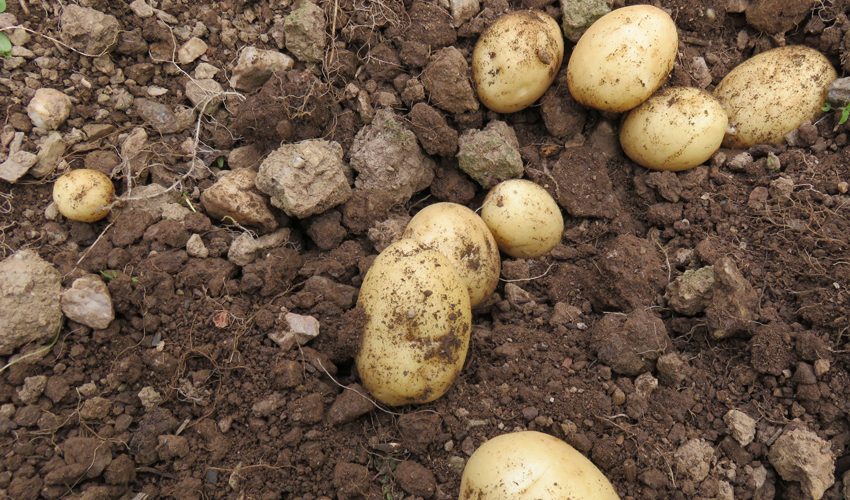Depending on where you are in the country and when you planted your seed potatoes, it may be time to dig up some of the earlies. Leave the maincrops until later though.
Earlies are usually ready for harvesting as soon as the flowers start to form. First earlies will flower earlier than second earlies. To check, carefully scrabble away into the soil until you find a couple of potatoes with your hands. If they are about the right size, then they are ready for harvesting, if they’re still too small, leave them another fortnight or so.
Maincrops are, as a general rule, harvested towards the end of August. For these, you want to wait for the leaves to start turning yellow before harvesting. Again, check to see that they are the right size before you start harvesting.
Harvesting Advice
If the soil is loose enough, you should be able to harvest without using a fork which will mean less damage to the potatoes. If you do need to loosen the soil with a fork, try and give the plants a wide berth and go deep to avoid spearing them!
You don’t need to harvest all your plants at once. If they are getting a bit big, you can cut off the foliage and your potatoes will stop growing but will keep in the ground for a few weeks (for earlies) or a month or two (main crop).
The only risk with this is pests eating away at them – wire worm are the most likely offenders, also slugs. If you’re worried about this, you can harvest them all at once and put them into a hessian sack. Keep them in a cool, dry, dark and airy place and they’ll keep well for a month or so.
What about blight?
Blight can become an issue, particularly in wet weather so keep a watchful eye. It usually comes later in the year, so tends not to be a problem with earlies. You’ll easily recognise blight as brown patches appearing on the leaves. At the first sign of blight, either harvest your potatoes and store as above, or cut off all the foliage and leave the potatoes in the ground for a week or two before harvesting and storing.

